Understanding The Church Year – Liturgical Calendar

These are the appointed festivals of the LORD, that you shall proclaim as holy convocations, my appointed festivals.
LEVITICUS 23.2
The Liturgical Calendar begins every year during November on the First Sunday of Advent and runs through Christ the King’s Solemnity. It is the temporal structure within which the Church celebrates the holy mysteries of Christ: “From the Incarnation and the Nativity to the Ascension to Pentecost and the wait in joyful hope for the Lord’s coming.”
The Liturgical Calendar is a tool that kindles Catholics’ hearts so that they will remember God’s marvelous plan of salvation that was accomplished through the birth, life, death, and rising of Christ, Who once again walks the earth in our time and presence.
 In each cycle of the Liturgical Calendar, we will find six Seasons:
In each cycle of the Liturgical Calendar, we will find six Seasons:
(1) Advent,
(2) Christmas,
(3) Lent,
(4) Triduum,
(5) Easter, and
(6) Ordinary Time.
During the year and Sunday worship, the Church also celebrates Solemnities, Feasts, and Memorials, which may be on any day of the week. During the year, these occur to commemorate special events or persons highly revered by the Catholic Church.
Some things are too vast to take all at once. Our eyes sweep over a grand Canyon and the night sky, but our brains can express only so many impressions at a time. Our hearts enter into the miracles of human life and love, but not even in a lifetime will we penetrate with depth.
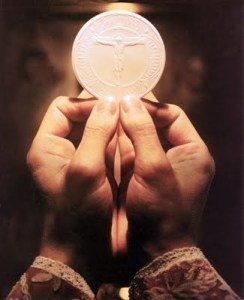 God’s saving plan is like that. The eternal mysteries surrounding our redemption are unimaginably deep and dazzling. How can we time-bound creatures of limited perceptions ever approach them?
God’s saving plan is like that. The eternal mysteries surrounding our redemption are unimaginably deep and dazzling. How can we time-bound creatures of limited perceptions ever approach them?
The church’s answer is the Liturgical year. Like the Israelites who commemorates God’s saving actions with fixed “Festivals of the Lord,” we consider the mysteries of our faith in stages, on a regular cycle. Week by week, the church unfolds various aspects of one Pascal mystery and invites us to view it from different angles.
We might compare this approach to visit as an enormous museum filled with paintings of the most exquisite appeal. Every year the Church travels through this collection together. We begin on a note of expectation for the Lord’s return with Advent. We view the masterpiece of the incarnation at Christmas and the Epiphany. Elsewhere in this interactive exhibit, we participate in the Lent and Paschal-tide. We are drawn into scenes from Jesus’ life and teachings. We see portraits of Mother Mary and His followers. But in the central hall is the masterpiece, a luminous work of art whose theme has radiance spilling over the entire collection; it is the “Sacred Triduum” – the remembrance of Christ’s death resurrection, which fills and transfigures the whole year.
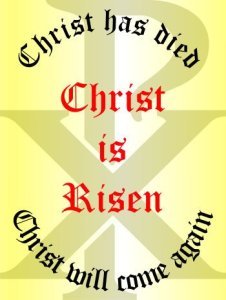 Distributed among these feasts and season in “ordinary time” that glows with resurrection light. Each Sunday, we return to that masterpiece, the main hall; we contemplate Christ dying and rising, and we respond with praise and thanks.
Distributed among these feasts and season in “ordinary time” that glows with resurrection light. Each Sunday, we return to that masterpiece, the main hall; we contemplate Christ dying and rising, and we respond with praise and thanks.
The Church guides us into inexhaustible mysteries. External riches are open up to us and” in some way made present for all time. We “lay hold of them and are filled with saving grace” (Vatican II, Constitution on the Sacred Liturgy102).
More About Liturgical Calendar
THE UNIVERSAL LITURGICAL CALENDAR The entire Church is required to follow the approved Universal Liturgical Calendar. The Universal Calendar originated from the Congregation of the Liturgy at the Vatican. It contains monthly guides that must be followed by all the faithful.
THE REGIONAL LITURGICAL CALENDAR Some celebrations are celebrated over an entire continent, such as celebrating the six patrons of Europe celebrated as Feasts within Europe. These celebrations, included in the Liturgical Calendar of certain countries, are over and above the Universal Liturgical Calendar’s mandatory observance.
THE DIOCESAN LITURGICAL CALENDAR Each diocese is permitted to have its own Liturgical Calendar to commemorate the diocesan patron(s) and Saints who are of importance to the life of the diocese. These special celebrations are over and above the mandatory Universal, Regional, and National celebrations. Dioceses are not required to commemorate other Dioceses’ celebrations unless such celebrations are a part of their own calendar.
RELIGIOUS LITURGICAL CALENDAR Individual religious Orders can have their own Liturgical Calendar to commemorate the founder(s) and Saints of their Orders. When a parish/Church belongs to a religious Order, this calendar is observed. The observance of religious Orders is over and above the previously mentioned Liturgical Calendars that are obligatory.
LOCAL LITURGICAL CALENDAR Every parish is encouraged to celebrate the formal Feast (Solemnity) of its Patron and the anniversary date of the Church/parish’s dedication. For example, if a church was dedicated to Saint Peter on September 1st fifty years ago, and St. Peter’s Feast is celebrated on June 29th every year, then the Parish is required to commemorate Saint Peter on June 29th and September 1st of each year.
Parishes dedicated to Our Lady, those holding a Marian title such as Our Lady of Peace, where such a title is not in the Liturgical Calendar, can celebrate their Marian Feast on August 15th or on the date of another Marian Feast that more closely resembles the particular title of Our Lady for that particular Church.
THE LITURGICAL SEASONS
The following is a glance at the Liturgical year:
Advent
4 weeks of preparation for Christmas
Christmas (birth of Christ)
Holy Family
Mary the Mother of God (New Year’s Day)
Epiphany
Baptism of the Lord
Ordinary Time I
Lent
Ash Wednesday
Passion (Palm) Sunday
Easter Sacred Triduum (Holy Thursday, Good Friday, and Holy Saturday.)
Easter Vigil (The Resurrection)
Easter (Celebrate the Resurrection at Masses – The greatest Feast of the year.)
Second to Sixth Sundays
Ascension
Pentecost
Ordinary Time II
Trinity Sunday
Body and Blood of Christ
Ordinary Time II (continued…)
Solemnity of Christ the King
THE LITURGICAL YEAR EXPLAINED
ADVENT
 Advent is the Season that includes four Sundays preceding Christmas. The Advent Season marks the beginning of the Liturgical Calendar. It always begins in late November or early December. On November 30th or on Sunday that is closest to this date, the Catholic Church begins the Liturgical Season of Advent. Advent ends on December 24th before the evening prayer of Christmas.
Advent is the Season that includes four Sundays preceding Christmas. The Advent Season marks the beginning of the Liturgical Calendar. It always begins in late November or early December. On November 30th or on Sunday that is closest to this date, the Catholic Church begins the Liturgical Season of Advent. Advent ends on December 24th before the evening prayer of Christmas.
The word “advent” is derived from the Latin word “Adventus,” which means “coming” or “arrival.” During this time, the faithful are admonished to prepare themselves for the coming of the Lord Jesus in three ways:
- First, to prepare themselves for the coming of the Lord as the Judge, either at death or the end of this world, whichever may come first.
- Secondly, to prepare themselves to receive the Real Presence of our Redeemer at Christmas through the Sacrament of the Holy Eucharist.
- Thirdly, to prepare themselves for the coming of Christmas, the birthday anniversary of the Lord’s coming into this world as God incarnate.
CHRISTMAS
 Christmas is the season when Catholics and other Christian Churches give thanks to God the Father for His Son’s birth, Jesus Christ. This Season lasts 12 days, beginning on Christmas Eve (December 24th) and continues to the Epiphany Feast (January 6th).
Christmas is the season when Catholics and other Christian Churches give thanks to God the Father for His Son’s birth, Jesus Christ. This Season lasts 12 days, beginning on Christmas Eve (December 24th) and continues to the Epiphany Feast (January 6th).
The word “Christmas” comes from “Christes Maesse,” which means “Christ’s Mass.” This is the Old English name for the service of Holy Communion that commemorates the birth of Christ. Christmas is one of the three great Feasts that are celebrated by the Catholic Church. The other two are Easter and Pentecost.
THE FEAST OF THE HOLY FAMILY
“The Feast of the Holy Family of Jesus, Mary, and Joseph (Sunday in the Christmas octave) is a festive occasion, particularly suitable for the celebration of rites or moments of prayer proper to the Christian family. The recollection of Joseph, Mary, and Jesus’ going up to Jerusalem, together with other observant Jewish families, for the celebration of the Passover (cf. Lk 2, 41-42), should normally encourage a positive acceptance of the pastoral suggestion that all members of the family attend Mass on this day. This Feast day also allows the renewal of our entrustment to the patronage of the Holy Family of Nazareth; the blessing of children as provided with the ritual; and were opportune, for the renewal of marriage vows taken by the spouses on their wedding day, and also for the exchange of promises between those engaged to be married in which they formalize their desire to found a new Christian family.”
“Outside of the Feast, the faithful have frequent recourse to the Holy Family of Nazareth in many of life’s circumstances: joining the Association of the Holy Family to model their own families on the Holy Family of Nazareth; frequent prayers to entrust themselves to the patronage of the Holy Family and to obtain assistance at the hour of death.” (# 112, Directory on Popular Piety and the Liturgy; Principles and Guidelines; Vatican City, December 2001)
THE FEAST OF MARY, THE MOTHER OF GOD
“On New Year’s Day, the octave day of Christmas, the Church celebrates the Solemnity of the Holy Mother of God. The divine and virginal motherhood of the Blessed Virgin Mary is a singular salvific event: for Our Lady, it was the foretaste and cause of her extraordinary glory; for us, it is a source of grace and salvation because “through her, we have received the Author of life.” (# 115, Directory of Popular Piety and the Liturgy; Principles and Guidelines; Vatican City, December 2001)
EPIPHANY (SUNDAY)
Beginning with the Epiphany (Sunday) of our Lord and the Sundays that follow, Christ’s manifestation of Himself to the world is traced out through His public ministry and miracles. The Epiphany Season celebrates the many ways that Christ made Himself known to the world. The Feast of the Epiphany of our Lord emphasizes three events: the Magi [Mt] visit. 2:1-12], the baptism of Jesus [Mk. 1:9-11], and the miracle at Cana [Jn. 2:1-11]. Nowadays, the emphasis is placed on the Magi’s visit (the three wise men) on Epiphany Day, Christ’s baptism is commemorated on the First Sunday that follows.
The Epiphany of our Lord is observed on January 6th. Some countries have moved the Feast of the Epiphany of our Lord to the nearest Sunday, calling that day “Epiphany Sunday.” The Epiphany Season lasts until the beginning of Lent. It includes four to nine Sunday, depending on the date of Easter Sunday.
The word “Epiphany” originates from the Greek word “epiphainen.” It is a verb that means “to shine upon,” “to manifest,” or “to make known.”
THE FEAST OF THE BAPTISM OF THE LORD
“Closely connected with the salvific events of the Epiphany are the mysteries of the Baptism of the Lord and the manifestation of his glory at the marriage Feast of Cana.”
“Christmastide closes with the Baptism of the Lord. Only recently has the Feast been rehabilitated, and hence has not given rise to any particular displays of popular piety. However, the Feast presents an excellent opportunity for the faithful to be reminded of their rebirth as children of God in Baptism.” (# 119, Directory of Popular Piety and the Liturgy; Principles and Guidelines; Vatican City, December 2001)
ORDINARY TIME I
Ordinary Time I begins with the Monday that immediately follows the Baptism of the Lord. It ends on the Tuesday before Ash Wednesday. During this part of the Liturgical Calendar, all the Sundays are numbered consecutively. (Consecutively means 1, 2, 3, 4, 5, etc.…) During this time frame, the Liturgy of the word (Church readings) is devoted to the mysteries surrounding the life of Christ.
ASH WEDNESDAY
Ash Wednesday is the first day of Lent. It is a day of repentance and self-examination. It reaches its peak in Holy Week, the commemoration of our Lord’s passion and death.
“In the Roman Rite, the beginning of the forty days of penance is marked with the austere symbol of ashes which are used in the Liturgy of Ash Wednesday. The use of ashes is a survival from an ancient rite according to which converted sinners submitted themselves to canonical penance. The act of putting on ashes symbolizes fragility and mortality and the need to be redeemed by the mercy of God. Far from being a merely external act, the Church has retained the use of ashes to symbolize that internal penance attitude to which all the baptized are called during Lent. The faithful who come to receive ashes should be assisted in perceiving the implicit internal significance of this act, which disposes them towards conversion and renewed Easter commitment.” (# 125, Directory of Popular Piety and the Liturgy; Principles and Guidelines; Vatican City, December 2001)
The sacramental ashes are made from burned palms that were distributed during the previous year on Palm Sunday. The sacramental ashes remind us that we are dust, and unto dust, we shall return. A symbol of penance made sacramental by the Church’s blessing, the ashes help us develop a spirit of humility and sacrifice. Those who are physically healthy are called to abstain from eating meat on Ash Wednesday and Fridays during Lent. Fasting consists of one full meatless meal and other limited meatless meals as required to maintain strength. The sick, the young, the elderly are not required to fast. This sacrificial fasting and abstinence should be done with the goal of spiritual development and conversion.
LENT
“Lent precedes and prepares for Easter. It is a time to hear the Word of God, to convert, to prepare for and remember Baptism, to be reconciled with God and one’s neighbor, and of more frequent recourse to the “arms of Christian penance”: prayer, fasting, and good works (cf. Mt 6, 1-6. 16-18).” (# 124, Directory of Popular Piety and the Liturgy; Principles and Guidelines; Vatican City, December 2001)
Through several stages of Christian initiation, the Lenten liturgy prepares the catechumens for the paschal mystery. The faithful are reminded of their own baptism and prepared through the penitential practices.
Lent is a 40 day Liturgical Season that initiates the most sacred part of the Christian year.
It begins on Ash Wednesday, covers 6 Sundays, and ends at the Mass of the Lord’s Supper on Holy Thursday evening. During Lent, Catholics are called to meditate with awe and thanksgiving on the great Paschal mystery, the salvation God offers to us sinners through the suffering, death, and resurrection of Jesus Christ. The season of Lent is a highlight in the Catholic calendar.
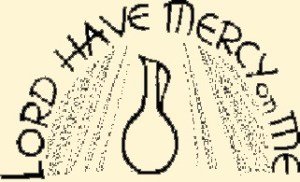 Because the Season of Lent is a time of penitence, reflection, and prayer that is solemn and restrained, flowers are generally removed from the sanctuary. Songs of praise such as the “Gloria in Excelsis” and the “Alleluias” are removed from the Liturgical Calendar.
Because the Season of Lent is a time of penitence, reflection, and prayer that is solemn and restrained, flowers are generally removed from the sanctuary. Songs of praise such as the “Gloria in Excelsis” and the “Alleluias” are removed from the Liturgical Calendar.
HOLY WEEK
During Holy Week, the holiest time of the liturgical year, the faithful gather to relive the final week of our Lord’s life.
PASSION (PALM) SUNDAY
“Holy Week begins with Palm Sunday, or ‘Passion Sunday,’ which unites the royal splendor of Christ with the proclamation of his Passion.”
“The procession, commemorating Christ’s messianic entry into Jerusalem, is joyous and popular in character. The faithful usually keep palm or olive branches, or other greenery that has been blessed on Palm Sunday in their homes or workplaces.“
“The faithful, however, should be instructed as to the meaning of this celebration so that they might grasp its significance. They should be opportunely reminded that the important thing is participation at the procession and not only obtaining palm or olive branches. Palms or olive branches should not be kept as amulets, or for therapeutic or magical reasons to dispel evil spirits or to prevent the damage these cause in the fields or the homes, all of which can assume a certain superstitious guise.”
“Palms and olive branches are kept in the home as a witness to faith in Jesus Christ, the messianic king, and in his Paschal Victory.”
(# 139, Directory of Popular Piety and the Liturgy; Principles and Guidelines; Vatican City, December, 2001)
THE EASTER TRIDUUM
“Triduum” is Latin for “Great Three Days.” The Easter Triduum, of 3 days duration, recalls the First Holy Thursday, Good Friday, and Holy Saturday events.
Every year, the Church celebrates the great mysteries of humanity’s redemption in the “most sacred triduum of the crucifixion, burial, and resurrection.” The Sacred Triduum extends from the Mass of the Lord’s Supper to Vespers on Easter Sunday and is celebrated “in intimate communion with Christ, her Spouse.” (# 140, Directory of Popular Piety and the Liturgy; Principles and Guidelines; Vatican City, December 2001)
GOOD FRIDAY
Good Friday is the second day of the Sacred Triduum. It is the solemn remembrance of the death of Jesus on the Holy Cross. “Good Friday” was formerly known as “God’s Friday.” In time, the name was corrupted and came to be known as “Good Friday.”
“The Church celebrates the redemptive death of Christ on Good Friday. The Church meditates on the Lord’s Passion in the afternoon liturgical action, in which she prays for the salvation of the world, adores the Cross, and commemorates her very origin in the sacred wound in Christ’s side [Jn. 19, 34].”
“In addition to the various forms of popular piety on Good Friday, such as the Via Crucis, the passion processions are undoubtedly the most important. These correspond, after the fashion of popular piety, to the small procession of friends and disciples who, having taken the body of Jesus down from the Cross, carried it to the place where there “was a tomb hewn in the rock in which no one had yet been buried” (Lk 23, 53).”
“The procession of the “dead Christ” is usually conducted in austere silence, prayer, and the participation of many of the faithful, who intuit much of the significance of the Lord’s burial.” (# 142, Directory of Popular Piety and the Liturgy; Principles and Guidelines; Vatican City, December 2001)
HOLY SATURDAY
“On Holy Saturday, the Church pauses at the Lord’s tomb, meditating his Passion and Death, his descent into Hell, and, with prayer and fasting, awaits his resurrection.”
Popular piety should not be impervious to the peculiar character of Holy Saturday. The festive customs and practices connected with this day, on which the celebration of the Lord’s resurrection was once anticipated, should be reserved for the vigil and Easter Sunday. (# 146, Directory of Popular Piety and the Liturgy; Principles and Guidelines; Vatican City, December 2001)
EASTER VIGIL (The Resurrection)
From antiquity, Holy Saturday, the third and last day of the Triduum, has been known as the Great Vigil.
EASTER
Easter is the greatest Feast of the liturgical year, the climax and center of the Catholic Liturgical Calendar. It celebrates the glorious Resurrection of the Lord Jesus at the Masses.
“Easter Sunday, the greatest solemnity in the liturgical year, is often associated with many displays of popular piety: these are all cultic expressions which proclaim the new and glorious condition of the risen Christ, and the divine power released from his triumph over sin and death.” (# 148, Directory of Popular Piety and the Liturgy; Principles and Guidelines; Vatican City, December 2001)
The day of Easter, which varies from year to year, is celebrated on Sunday that follows the first full moon after the vernal equinox, the day in Spring when there are a 12-hour day and a 12-hour night (March 20). (The Council of Nicea in A.D. 325) Easter can be as early as March 22 nd and as late as April 25th.
EASTER SEASON
The Easter Season begins with the Easter Vigil celebration on Easter Sunday and ends 50 days later with Pentecost Sunday.
The fifty days from Easter Sunday to Pentecost are celebrated in joyful exultation as one Feast day, or better as one ‘‘great Sunday’’ During this season, above all others, it is a time to sing the Alleluia.
ASCENSION
The Ascension is celebrated on the 7th Sunday after Easter. It focuses on the entry of Jesus’ humanity into Divine glory in God’s heavenly Kingdom, 40 days after His Glorious Resurrection.
PENTECOST SUNDAY
“Eastertide concludes with Pentecost Sunday, the fiftieth day, and its commemoration of the outpouring of the Holy Spirit on the apostles (cf. Acts 2, 1-4), the Church’s foundation, and the beginning of its mission to all nations and peoples. The protracted celebration of the vigil Mass has particular importance in cathedrals and some parishes since it reflects the Christian community’s intense persevering prayer in imitation of the Apostles united in prayer with the Mother of Jesus.”
“The mystery of Pentecost exhorts us to prayer and commitment to the mission and enlightens popular piety, which is a ‘continued sign of the presence of the Holy Spirit in the Church. He arouses faith, hope, and charity, in the hearts [of the faithful] and those ecclesial virtues which make popular piety valuable. The same Spirit ennobles the numerous and varied ways of transmitting the Christian message according to the culture and customs of all times and places’.” (# 156, Directory of Popular Piety and the Liturgy; Principles and Guidelines; Vatican City, December 2001)
ORDINARY TIME II
On the Monday following Pentecost Sunday (mid-May to mid-June) until the Saturday before the 1st Sunday of Advent, Ordinary Time II is celebrated. The Sundays of this season do not celebrate any specific aspect of the mystery of Christ. Instead, they are devoted to the mystery of Christ in all its aspects.
TRINITY SUNDAY
On the First Sunday following Pentecost Sunday, the Church celebrates the Feast of the Holy Trinity. On this Sunday, the Church rejoices in the revealed truth that God is triune, three-in-one, in the Father, the Son, and the Holy Spirit.
BODY AND BLOOD OF CHRIST (CORPUS CHRISTI)
“The Solemnity of the Body and Blood of Christ is observed on the Thursday following the solemnity of the Most Blessed Trinity. This Feast is both a doctrinal and cultic response to heretical teaching on the mystery of the real presence of Christ in the Eucharist and the apogee of an ardent devotional movement concentrated on the Sacrament of the Altar. It was extended to the entire Latin Church by Urban IV in 1264.” (# 160, Directory of Popular Piety and the Liturgy; Principles and Guidelines; Vatican City, December 2001)
ORDINARY TIME II (Continues…)
The months during Ordinary Time II are a time of growth for its members as the church meditates on the Bible’s teachings as they apply to each believer’s daily life.
SOLEMNITY OF CHRIST THE KING
The Solemnity of Christ the King commemorates the closing of the liturgical year. It reminds us that Christ is the Head of the Body, the Church, and His Divine reign stretches out from the alpha of time to the omega over and above being the universal King.
GENERAL INFORMATION
DAYS OF OBLIGATION
Throughout the liturgical year, the Catholic Church honors certain Feasts of Mary and the Saints. During these special Feasts, we are called to remember the Saints’ lives and ask them to pray for us. While most days of obligation fall on a Sunday, there are special Feasts in the Liturgical Calendar that fall during the week.
The number of days of obligation may vary from country to country. For example, in the United States, the following 6 days of obligation are observed: Christmas Day (December 25); Mary, the Mother of God (January 1); the Ascension (7th Sunday of Easter); the Assumption of Mary (August 15); All Saint’s Day (November 1) and the Immaculate Conception (December 8).
In Canada, only 2 days of obligation are observed: Christmas (December 25) and Mary, the Mother of God (January 1).
SOLEMNITIES, FEASTS, AND MEMORIALS
Solemnities are the days of the greatest importance and begin with the first vespers of the preceding day. (Vespers are the evening prayers.)
Feasts are celebrated within the limits of a natural day. They do not have first vespers, except Feasts of the Lord, which fall on Sundays during Ordinary time, or during Christmas; Season Memorials may be obligatory or optional.
LITURGICAL EXCEPTIONS
As a general rule, Weddings and Funerals can take place throughout the liturgical year. Weddings are discouraged but permissible during lent (from Ash Wednesday to Easter Sunday). Weddings may not be celebrated during the Holy Week, that is, the week before Easter Sunday. Funerals may not be celebrated during the Easter Triduum, the three days before Easter. Also, funerals may not be celebrated before or during Christmas and New Year when these fall on a weekday.
 Copyright secured by Digiprove © 2021 meline Ngo
Copyright secured by Digiprove © 2021 meline Ngo

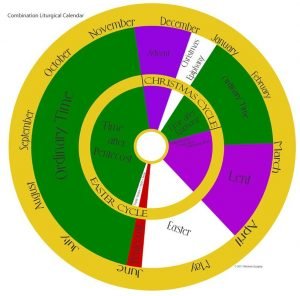
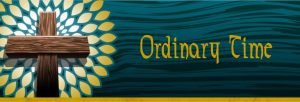

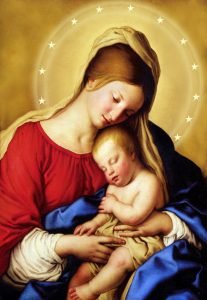















Recent Comments